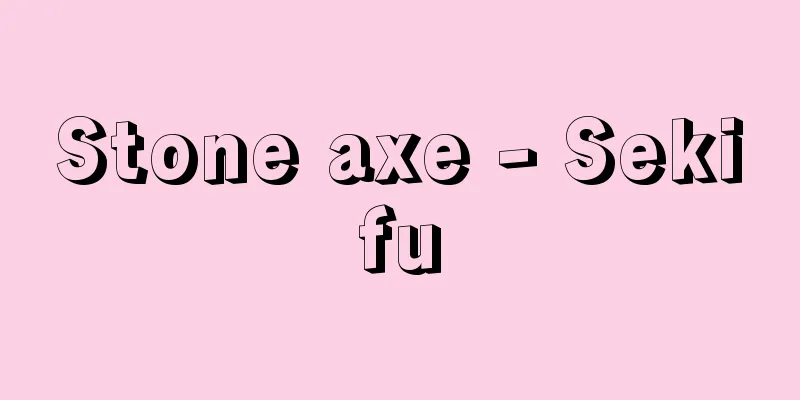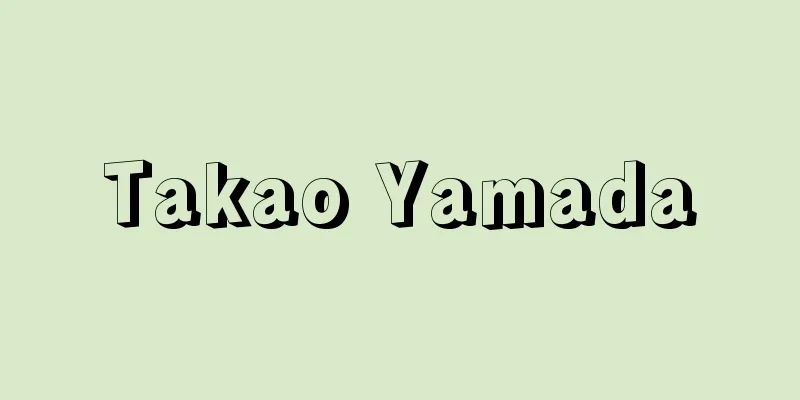Stone axe - Sekifu

|
Stone axes. Stone axes were the most common tool throughout the Jomon period. They can be broadly divided into polished and chipped. Polished stone axes, with an oblate oval cross section and a clam-shaped blade, became widespread from the Early Jomon period onwards. The same was true for so-called rod-shaped axes. Fixed-angle axes appeared in the Hokuriku region towards the end of the Middle Jomon period, but developed into a representative stone axe of the Late Jomon period. Relatively soft stones such as serpentine, sandstone and diorite were chosen for the axes. Gravel axes, found in early twisted-thread pattern pottery in the Kanto region, are mainly made by simply polishing the tip on one side of river stones, and unlike ordinary stone axes, they are single-edged. Polished stone axes are wooden tools used in the process from felling trees to processing them. In recent years, wooden stone axe handles have been excavated from marshland ruins such as the Torihama Shell Mound (Fukui Prefecture) and the Shigasato Ruin (Shiga Prefecture); some of them are socketed and some have holes drilled into them, making them quite elaborate. Special polished stone axes include those known as multi-headed stone axes and ringed stone axes. These only appeared in certain times and regions. They are thought to have been attached to the head of a club and used as a weapon. They are found in Hokkaido and the Tohoku region. Polished stone axes have traces of polishing on their sides and body. This manufacturing method is common to those found in Siberia. Chipped stone axes, made by chipping stones such as slate or shale, are not as common as ground stone axes when viewed nationwide, but their discoveries are quite noticeable. There was an explosive increase in their number during the Middle Jomon period, especially in the Chubu and Kanto regions. It is not uncommon for several hundred to be excavated from a single site. Known shapes include mallet-shaped, rectangular, and weight-shaped, but these differ depending on the period. The rectangular shape was common in the Middle period, while the weight shape developed from the end of the Middle to Late period. Chipped stone axes are digging tools. Chipped stone axes, which are also considered to be digging tools, have been unearthed prominently from Late Jomon sites in western Japan, west of Aichi Prefecture. In the Yayoi period, both polished and forged stone axes were found. However, the former have no systematic connection to the polished stone axes of the Jomon period. This is why they are called "continental stone tools." The thick clam-blade stone axes are heavy and made mainly from diorite-based stone. They are double-edged and were used as axes for felling and splitting wood. The columnar single-edged stone axes and the flat single-edged stone axes were both adzes (hand axes) and were used for cutting and gouging. All of these stone tools played their role as woodworking tools, but iron tools were needed for detailed processing and finishing. It is thought that stone tools and iron tools were used as a set. However, in the later stages, the polished stone axes disappeared rapidly. This was the result of the spread of iron tools. [Isamu Okamoto] Source: Shogakukan Encyclopedia Nipponica About Encyclopedia Nipponica Information | Legend |
|
石製の斧(おの)。石斧は、縄文時代を通じてもっとも一般的な道具として行き渡っていた。まず、磨製と打製に大別できる。断面が扁楕円(へんだえん)形、刃部が蛤刃(はまぐりば)を呈する磨製石斧は、おおむね縄文前期以降に普及する。いわゆる棒状斧もほぼ同様である。定角(ていかく)式とよばれるものは、北陸地方では中期末に出現するが、後晩期の代表的な石斧として発達をみせた。蛇紋岩、砂岩、閃緑(せんりょく)岩などの比較的軟らかい石材が選ばれている。関東地方の早期の撚糸文(よりいともん)土器群などに伴う礫斧(れきふ)は、おもに河原石の片面の先端を磨いただけのもので、一般の石斧とは異なり片刃である。磨製石斧は、樹木の伐採からその処理に至るまでの工程で使われた木工具である。近年、木製の石斧の柄(え)が鳥浜貝塚(福井県)、滋賀里(しがさと)遺跡(滋賀県)などの低湿地遺跡から出土しているが、ソケット状のものや、孔(あな)をうがったものなど、かなり精巧なつくりである。 特殊な磨製石斧として、多頭石斧、環状石斧などの名でよばれるものがある。これらはその出現する時期・地域が限られている。棍棒(こんぼう)の頭に装着し、武器として用いられたと考えられている。北海道、東北地方に分布する。擦切磨製(すりきりませい)石斧は側面や体部に擦切の痕跡(こんせき)を残している。この製法はシベリア方面のものと共通である。 粘板岩や頁岩(けつがん)などの石を打ち欠いてつくった打製石斧は、全国的にみれば磨製石斧ほど一般的ではないが、その発見はかなり目だつ。とくに中部・関東地方の中期の段階には、爆発的ともいえる増加をみせる。一つの遺跡から数百個以上が出土する例はまれではない。撥(ばち)形、短冊(たんざく)形、分銅(ふんどう)形などの形態が知られているが、これらは時期による差でもある。短冊形は中期に多く、分銅形は中期末から後期に発達する。打製石斧は土掘り具である。なお、愛知県以西の西日本の縄文晩期の遺跡からは、同じく土掘り具とみなされる打製石斧の出土が目だつ。 弥生(やよい)時代にも、磨製と打製の双方がある。しかし、前者は縄文時代の磨製石斧とは系統的なつながりをまったくもたない。「大陸系石器」といわれてきたゆえんである。太(ふと)型蛤刃石斧は重量のあるもので、もっぱら閃緑岩系の石材でつくられている。両刃であり、アックスaxe(斧)として木材の伐採・打割などに使われた。柱状片刃石斧、扁平片刃石斧はともにアッズadze(手斧(ちょうな))であり、削る、えぐるなどの機能を果たした。これらの石器はいずれも木工具として相応の役割を担ったが、細部加工や仕上げの段階では鉄製利器が必要とされた。石の道具と鉄の道具は、いわばセットとして使用されていたと考えられる。しかし、後期の段階を迎えると、一群の磨製石斧は急激に消滅してゆく。鉄器の普及の結果である。 [岡本 勇] 出典 小学館 日本大百科全書(ニッポニカ)日本大百科全書(ニッポニカ)について 情報 | 凡例 |
<<: The Story of a Woman Who Loved Women
Recommend
Okinamen - Okinamen
〘Noun〙 A type of Noh mask. It has been used since ...
Sāgar (English spelling)
A city in the north-central part of Madhya Pradesh...
Dahlmann, Friedrich Christoph
Born: May 13, 1785, Wismar Died December 5, 1860. ...
Tetragonocalamus quadrangularis (Fenzi) Nakai
A medium-sized bamboo of the Poaceae family, also ...
Tile maker - Kawarashi
A craftsman who manufactures and sells tiles and ...
Daijiro Furuta
Year of death: October 15, 1925 Year of birth: Jan...
Kangien
This school was founded in 1817 (Bunka 14) by the...
ceramic
...In Japan, the term "douki" (earthenw...
Sea Dragon King - Kairyuou
A dragon king who lives in the sea. A dragon god. ...
Vireya
…Unlike Japanese rhododendrons, Western rhododend...
Reverse Peristalsis
...In the small and large intestines, strong peri...
Respiratory control
...The generation of ATP that is coupled with thi...
Papa
…Bishop of Rome, Vicar of Jesus Christ, Successor...
Horned stink bug (horned stink bug) - acanthosomatid bug
A general term for insects of the Hemiptera family...
Blood -
The red fluid tissue that flows through the blood...









